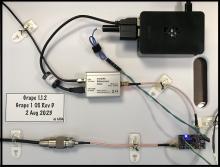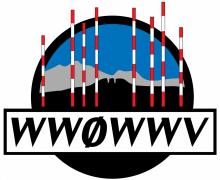|
News Flash! |
HamSCI is actively soliciting host locations for Grape Personal Space Weather Stations. Each Grape PSWS consists of a small shortwave radio receiver, stealthy antenna, GPS receiver and and single board computer (for data processing and uploading data to the Internet). Grape data will be used by HamSCI researchers and citizen scientists to answer questions regarding the Earth's ionosphere, the region of charge particle that exists between 80 and 300km above the Earth's surface. The behavior of the ionosphere is important to many radio services, including global navigation and broadband Internet via satellite. Grapes measure Doppler shift while receiving standard frequency stations such as WWV (Boulder, CO), WWVH (Island of Kauai, HI) and CHU (Ottawa, ON). HamSCI's goals is to blanket the US and nearby Canadian provinces with Grapes, forming a distributed array of scientific instruments. They should be in place well before the October, 2023 North American solar eclipse and remain in service until well past the April, 2024 eclipse. Grapes come in two flavors: Grape 1 (build it yourself) and Grape 2 (commercially built, estimated availability: Q3, 2023). Please see link at left. |
PSWS Oveview
The Personal Space Weather Station project ultimately aims to create a small, multi-instrument system that can make ground-based measurements of the space environment. The observations from this project will not only be useful to the owner of the system, but also aggregated into a central database for space science and space weather research purporses. Initial work focuses on the development of a scientific-grade high frequency (HF) radio receiver, as well as the necessary software and network infrastructure. This project is led by the The University of Scranton, in collaboration with the Tucson Amateur Packet Radio, Inc. (TAPR), Case Western Reserve University / Case Amateur Radio Club W8EDU, the University of Alabama, the New Jersey Institute of Technology Center for Solar Terrestrial Research (NJIT-CSTR), and the Massachusetts Institute of Technology Haystack Observatory.
PSWS Components
The Personal Space Weather Station is a modular system, with each module being developed by a different team. Visit the links below to learn about the different parts of the PSWS.
- Grape Low-Cost Personal Space Weather Station (WWV Doppler Monitor)
- TangerineSDR (High-performance Software Defined Radio)
- Ground Magnetometer Module
- VLF Receiver (Coming Soon)
Research Questions
The PSWS project is motivated by questions both from the amateur radio and science communities.
Science Questions
- How does the ionosphere respond to inputs from space and from the neutral atmosphere?
- How does the ionosphere couple with the neutral atmosphere and with space?
- What are the sources of medium and large scale traveling ionospheric disturbances?
- What are the causes of Sporadic E?
Amateur Radio Questions
- How do disturbances such as solar flares, geomagnetic storms, and traveling ionospheric disturbances affect radio wave propagation?
- How does ionospheric science help amateur radio operators improve communications?
- How can I make measurements in my own backyard that will help improve my amateur radio operations?
Get Involved
We are always looking for new people to get involved! Projects include system design and testing, data acquistion, and data analysis. Visit our Get Involved page to learn how to join the HamSCI Community.
PSWS Resource Links
Please visit the Space Weather Station Working Page for a variety of links and resources related to the HamSCI PSWS Project.
Acknowledgments
We gratefully thank the many volunteers who make this project run, as well as the support of National Science Foundation Grants AGS-2002278, AGS-1932997, and AGS-1932972.




